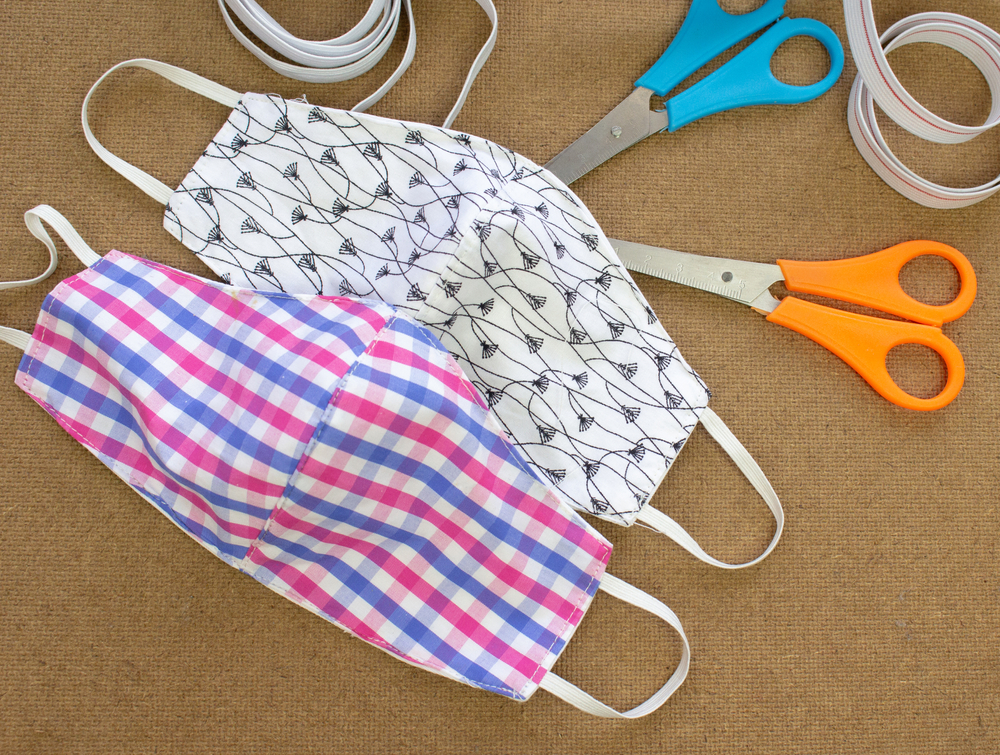|
Pygott & Crone Newsletter: Latest Property Market Updates
In this months edition of the Pygott & Crone newsletter, we are firstly pleased to announce that the help-to-buy extension has now been confirmed, making the deadline now the end of March.
Is your home currently on the market? We've got a list of key decorating mistakes that could stop your home from selling so you can present your home in the best possible light. Further, into our newsletter, we take a look at how housing-buying behaviour continues to be shaped by working from home as this becomes the new norm for many people.
Finally, we explore how market activity remains high despite the stamp duty deadline as the market is still experiencing healthy levels of interest.
We hope you enjoy this months edition! If you have any property queries please do not hesitate to contact us.
Multiple gold awards won at the annual negotiator awards
We are delighted to announce that a very successful year for us has been recognised at the annual Negotiator Awards, the property event of the year. We were shortlisted in four categories and are delighted to have achieved three gold awards.
Click here to read Multiple gold awards won at the annual negotiator awards .
Aladdin
From now until Sunday 19 January
Performances at the Riverhead Theatre
Click here to read Aladdin.
Toy Collectors Fair
Sunday 26 January
Family friendly jam packed Toy collectors fair at the Epic Centre
Click here to read Toy Collectors Fair.
Dog Friendly Day
Saturday 8 February
Unlock 1,000 years of history with your furry companion at Lincoln Castle
Click here to read Dog Friendly Day.
Preparing your property for sale
With demand for property prior to lockdown soaring, there are sure to be plenty of motivated buyers waiting now that the property market restrictions are relaxed, therefore now is an ideal time to prepare your property for a quick sale.
Kerb appeal
As is always the case with selling properties, a first impression can make or break a sale with a poorly presented property often putting off buyers before they have even set foot in the home. In the summer this is especially important as buyers will often drive or walk past a property before they decide to book a viewing. With the summer sun shining a light on any less-than-perfect parts of the exterior of your property, you should ensure that flowers are planted, weeds are pruned and lawns are mowed. Extra attention to details, such as ensuring that the front door has been cleaned and the windows are streak-free will pay dividends in your selling process.
Accessories
A neutral interior will appeal to a mass market and increase the scope of your property in terms of potential buyers, but if you are looking to make the most of the summer then don’t be afraid of colour. Using accessories to add pops of colour around your home that reflect the brighter summer season – such as burnt orange and lemon – will make your property stand out from the crowd in those all-important photographs.
Lights
When we think of summer, we all first think of sunshine and brighter evenings – so make the most of this light when presenting your home for sale. Get rid of heavy curtains and dark blinds, which can make a room feel smaller and prevent the light from entering a room. Buyers want to feel that rooms are bright and spacious, so if at all possible have windows and doors open throughout the house to create a light, airy feeling (as well as bringing in those fresh summer scents).
Set dress
Set dressing refers to the arranging of a room or space in order to paint a picture of the kind of lifestyle which could be enjoyed in your property. Never is it more important to set dress your garden than throughout the summer months, with potential buyers wanting to know that they will be able to enjoy the outdoor space which your home provides. Tempt potential buyers by showing off your outdoor spaces with garden furniture, fire pits and barbecues.
Viewing times
During the summer months many people like to start work early and leave early in order to benefit from the longer evenings; make sure that you can accommodate as many viewings as possible by being flexible with your viewing times. Allowing people to view your home early in the morning, as well as in the afternoon will help bring more people through the door as well as showing off your property in favourable lighting.
How to make your own face mask
As the country enters the next stage of its strategy to ease the lockdown restrictions whilst preventing the spread of Coronavirus, the Government has issued new advice to the public on how to stay safe whilst in public spaces (such as shops and public transport). The Government has asked people to wear face masks to cover their nose and mouth where social distancing is not possible. This advice has been detailed in the Government Covid-19 recovery strategy, detailing its plans for lifting the UK out of lockdown; which can be viewed here.
To prevent any additional pressure to the NHS in obtaining crucial PPE supplies, the Government has issued instructions on how to make your own face mask at home, by simply using elastic bands and some cotton fabric or even just an old T-shirt. Your face mask should be worn so that you can breathe comfortably whilst covering your nose and mouth. You should sanitise or wash your hands before putting it on and taking it off, and you should wash your face mask regularly.
We share how to make your own face mask at home below*:
Making a face mask using an old T Shirt
You will need
• One old T-shirt that you no longer want
• Scissors
Method
Step 1: Cut a straight line across the width of the T-shirt (front and back) approximately 20cm from the bottom of the T-shirt.
Step 2: From a point 2cm below the top right-hand corner of the fabric, make a 15cm horizontal cut through both sides of the fabric that is parallel to the top of the rectangle.
Step 3: Cut down towards the bottom of the fabric until you reach approximately 2cm above the bottom edge. From here, make another 15cm cut that runs parallel to the bottom of the fabric to make a rectangle that can be discarded.
Step 4: To make the ties, cut open the edge of the 2 long strips of fabric. Unfold the main piece of fabric and place over the mouth and the nose. The 4 strips act as ties to hold the cloth face covering in place and should be tied behind the head and around the neck.
Making a face mask using a piece of cotton fabric
You will need
• two 25cm x 25cm squares of cotton fabric
• two 20cm pieces of elastic (or string or cloth strips)
• needle and thread
• scissors
Method
Step 1: Cut out two 25cm x 25cm squares of cotton fabric. Stack the 2 squares on top of each other.
Step 2: Fold over one side by 0.75cm and hem, then repeat on the opposite side. Make 2 channels by folding the double layer of fabric over 1.5cm along each side and stitching this down.
Step 3: Run a 20cm length of elastic (or string or cloth strip) through the wider hem on each side of the face covering. These will be the ear loops. Use a large needle to thread it through. Tie the ends tightly.
If you only have string, you can make the ties longer and tie the covering behind your head.
Step 4: Gently pull on the elastic so that the knots are tucked inside the hem. Gather the sides of the covering on the elastic and adjust so the covering fits your face. Then securely stitch the elastic in place to keep it from slipping. These elastic loops fit over the ears.*Our step by step guides have been taken from the Gov.uk website here
How to make your own face mask

As the country enters the next stage of its strategy to ease the lockdown restrictions whilst preventing the spread of Coronavirus, the Government has issued new advice to the public on how to stay safe whilst in public spaces (such as shops and pubic transport). The Government has asked people to wear face masks to cover their nose and mouth where social distancing is not possible. This advice has been detailed in the Government Covid-19 recovery strategy, detailing its plans for lifting the UK out of lockdown; which can be viewed here.
To prevent any additional pressure to the NHS in obtaining crucial PPE supplies, the Government has issued instructions on how to make your own face mask at home, by simply using elastic bands and some cotton fabric or even just an old T-shirt. Your face mask should be worn so that you can breathe comfortably whilst covering your nose and mouth. You should sanitise or wash your hands before putting it on and taking it off, and you should wash your face mask regularly.
We share how to make your own face mask at home below:
Making a face mask using an old T-shirt
You will need
- One old T-shirt that you no longer want
- Scissors
Method
Step 1: Cut a straight line across the width of the T-shirt (front and back) approximately 20cm from the bottom of the T-shirt.
Step 2: From a point 2cm below the top right-hand corner of the fabric, make a 15cm horizontal cut through both sides of the fabric that is parallel to the top of the rectangle.
Step 3: Cut down towards the bottom of the fabric until you reach approximately 2cm above the bottom edge. From here, make another 15cm cut that runs parallel to the bottom of the fabric to make a rectangle that can be discarded.
Step 4: To make the ties, cut open the edge of the 2 long strips of fabric. Unfold the main piece of fabric and place over the mouth and the nose. The 4 strips act as ties to hold the cloth face covering in place and should be tied behind the head and around the neck.
Making a face mask using a piece of cotton fabric
You will need
• two 25cm x 25cm squares of cotton fabric• two 20cm pieces of elastic (or string or cloth strips)• needle and thread• scissors
Method
Step 1: Cut out two 25cm x 25cm squares of cotton fabric. Stack the 2 squares on top of each other.
Step 2: Fold over one side by 0.75cm and hem, then repeat on the opposite side. Make 2 channels by folding the double layer of fabric over 1.5cm along each side and stitching this down.
Step 3: Run a 20cm length of elastic (or string or cloth strip) through the wider hem on each side of the face covering. These will be the ear loops. Use a large needle to thread it through. Tie the ends tightly.
If you only have string, you can make the ties longer and tie the covering behind your head.
Step 4: Gently pull on the elastic so that the knots are tucked inside the hem. Gather the sides of the covering on the elastic and adjust so the covering fits your face. Then securely stitch the elastic in place to keep it from slipping. These elastic loops fit over the ears.*Our step by step guides have been taken from the Gov.uk website here
Are you asking these key questions when you buy or sell?

A recent study has revealed the 'most dreaded' and unusual questions buyers have asked about a property before putting in an offer.
With a small minority asking whether the pets come included in the sale, it’s fair to say that not all of the responses are winners.
However, the report by Hillarys has shed light on just how many Brits lack proper preparation during the home buying process.
Up to two-thirds will not plan their questions ahead of a house viewing, meaning they are not getting the full value out of the experience, as well as potentially wasting an opportunity to find out all of the property’s pros and cons earlier on.
The most dreaded questions from buyers:
Has it dropped in value? 54%What local plans could affect us? 42%What’s the lowest price we could get it for? 33%Is the seller in a chain? 21% To help you make the most of your viewings the next time you decide to buy or sell, we thought we'd share practical suggestions for you to consider. What are some of the more serious questions you should be asking?Whether you're instructing an agent or viewing a property, how prepared you are will determine how quickly you're able to move.Are you asking these key questions:1. Exactly what is included in the sale? Whilst it's safe to assume most sellers will want to keep their pets, it's important to outline what content might be included, such as fixtures, fittings and garden furniture.2. How long has it been on the market and how many offers have they received so far?3. When are the sellers looking to move out? Knowing whether they've already found another home or they're still in the midst of looking will help you to determine how long the process may take and how much room for uncertainty there is.4. Have there been recent renovations or any difficulties with boilers, drains and guttering?5. How did the agent decide on an asking price? Good agents will be able to provide justifications for the value of a property, so you'll know whether it's listed at the right amount or if it's overpriced. What to ask when selling:1. How will you market my property? Are they regularly contacting a database of suitable applicants to give you greater market exposure, or does their strategy start and end with a basic Rightmove listing?2. What are your success metrics and how do they compare to other agents? In other words, what's their experience selling a home like yours at a price like yours?3. How much will you charge? Choosing the agent who offers the lowest fees won't guarantee you reach asking price and you may lose time and money on the market, be savvy when you instruct representation for your property investments.4. What are the contract terms? Before beginning any contractual relationship, know exactly what it is you should expect from them.If you're thinking of selling and want to find out the value of your home, contact us.
Market your house correctly for a speedy, seasonal sale

The property market has continued to experience remarkable levels of activity.
In the first week of August, properties at SSTC (Sold Subject to Contract) were almost at double their number compared to figures from the same period in 2019. This indicates a significant release of pent-up demand due to lockdown.
If you, like a lot of homeowners right now, are considering putting your property on the market, here are some of the ways to market your house well to potential buyers.
Make sure your property images are professional
In order to get viewings, you need to reel them in with your property advert.
Make sure your photos are clear and focused. If it is a cloudy day, see if you can rearrange the shoot. There is nothing nicer than a clear blue sky!
Increase your kerb appeal
It takes just seven seconds for somebody to make their first impression of your property, so make sure your property’s exterior is the best it can be. You want them to walk down the drive feeling impressed and excited to go inside.
Some easy ways to do this is to give your front door or fencing a fresh lick of paint, put up some hanging baskets to add colour, pull out any weeds, move the bins out of sight and make sure the lawn is mowed.
De-clutter
The hallway is famous for housing plenty of clutter: shoes, coats, handbags. Make sure everything that can be put away is tucked out of sight to make it appear more spacious.
As some hallways can be dark and narrow, adding a mirror to a wall can give the illusion of space and can also brighten it up.
A kitchen is a big selling point, so make sure all desktops are wiped down and free of clutter.
Give your viewers space
Let your viewers freely wander around your home with the agent.
This will make them feel much more comfortable asking questions and it also means they might take their time in each room.
Be ready to answer any questions after the viewing. Also be sure to leave hand sanitiser dotted around your property, so not only you but also your viewers will feel comfortable.
Make the most of outdoor space
Since lockdown, we have noticed a real shift in property priorities.
Everybody is putting outdoor space at the top of their agendas, so make sure your garden is well showcased.
If this is an impromptu house viewing, you might not have time to lay a new flower bed, but make sure the lawn is freshly mown, trees and shrubs are cut back to create more space, weeds are removed, and outside furniture is laid out nicely.
Help-to-buy extension has been confirmed

The deadline for the current help-to-buy scheme is set to be extended by a further month – taking it to the end of March – in order to take into account delays to the sector caused by the pandemic. Aimed at first-time buyers, it was during July 2020 that the practical completion deadline was initially extended from the end of December to February 28th this year. This came down to matters regarding COVID-19 and how the current climate has drastically affected the property market as a whole, whereby the government were asked to rethink the date in order to benefit those looking to step onto the property ladder and move into a new build home. At this point in time, practical completion can be done up until March 31st, however, that stands as the final deadline for legal completion. The only exemption is where Homes England has previously granted extension to legal completion regarding those homes reserved before June 30th 2020, and who now have until 31st May. Statistics that were officially published last year indicate that 278,639 new homes were bought on a help-to-buy scheme between April 2013 and June 2020.* If you require further guidance or support, please don't hesitate to contact a member of our team today.Market activity remains high despite stamp duty deadlineDecorating mistakes that could stop your home from sellingHouse-buying behaviour continues to be reshaped by working from home*GOV.UK
Market activity remains high despite stamp duty deadline

Initially announced in 2020, the stamp duty holiday was intended to aid homeowners through the buying process during the pandemic. As expected, many took this opportunity to upgrade to their dream home or purchase their next investment, as savings of up to £15,000 were up for grabs. Although it was thought that activity would begin to peter out at the end of last year, that hasn't been the case as the market is still seeing healthy levels of interest and activity. As of mid-January, there were around 613,000 properties at 'sale agreed', waiting for legal completion ahead of the stamp duty holiday deadline on March 31st.* Amongst these, it is believed that 100,000 may not complete in time to secure stamp duty savings. However, buyers and sellers alike appear mostly unfazed and are continuing to buy and sell regardless of the deadline, which may be as a result of the increasing availability of mortgage products with 10% deposits. According to Rightmove, those looking to sell in January were also pricing their properties competitively, allowing for quicker sales. One possible explanation for this is that property priorities have changed in the past 12 months due to sellers needing more space and falling out of love with their current home, making their need to move more urgent. Similarly, buyer activity has continued to surge, with market levels exceeding that of January 2020. During a 10-day period in January, there was a reported 12% increase in estate agency enquiries and a 9% increase on sales agreed from 2020. Combined with the fact that Rightmove are seeing ever-increasing website visit numbers, which in January were 33% higher than last year, these statistics give homeowners and buyers a promising opportunity in 2021. Rightmove’s director of Property Data, Tim Bannister, suggests: “As we entered the new year and a new lockdown, the housing market remains open but is focused on the imminent end of the stamp duty holiday and on the challenges of the pandemic. These major influences on mover behaviour are clouding the 2021 outlook, but Rightmove’s early January market-leading indicators of buyer demand and the number of actual sales being agreed are looking robust, showing that there are many compelling reasons other than the stamp duty savings to make buyers enter the market in 2021.” If you are looking to upgrade your home this February, our team of professional agents are here to help. As your trusted agent, we specialise in local knowledge and attention to detail when valuing your property. For more information on what we can do for you, contact us. Help-to-buy extension has been confirmedDecorating mistakes that could stop your home from sellingHouse-buying behaviour continues to be shaped by working from home*Property Reporter
Decorating mistakes that could stop your home from selling

With the property market seeing a lot of demand, sellers need to present their homes in the best possible light to beat the competition. These common mistakes could mean that your home receives less interest and fewer offers, so it's worth your time and consideration to rectify the following: Misplaced curtains Curtains are a really effective way to keep your house warm, frame your windows and add a splash of colour or texture to any room. However, the positioning of curtains can impact the look and feel of the living space in a negative way. Whilst you might assume that they should be hung just above the window, this actually makes the area feel smaller than it is, so it's advisable to emphasise the height of the room by fixing them as high as possible. Open wardrobes These can look great in pictures and act as a really beneficial feature to your property, however, they can soon appear untidy or ruin the room's aesthetics. It’s important to remember that for open wardrobes to look good, a minimalistic layout is necessary. This can often be unpractical, especially if you're still living in the property, but try to create clear spaces to avoid deterring buyers and devaluing your home. Overkill on florals Whilst the 80s trend of floral patterns could be making a comeback, it’s important to not get too drawn into trends. Going for strong design elements is a way to express your own character on your home, but you run the risk of putting buyers off by using overly decorative styles that aren't suited to every person who comes across your home. If you do decide to opt for patterns, use them as an accent rather than for every wall and piece of furniture, as this will add longevity to the design. Buying furniture that is too big for the room Sometimes when shopping for new furniture, we can be completely drawn to a certain item, regardless of whether it works for the space we have. However, it’s vital that you try to avoid any purchases that don't make sense for your home, if you're planning to move in the next few months. A room that is too cluttered could make it seem much smaller and takes away crucial space, which is becoming increasingly important to the nation's homebuyers. If you’re thinking about selling your home, start the process today by booking a valuation with us. Help-to-buy extension has been confirmedMarket activity remains high despite stamp duty deadlineHouse-buying behaviour continues to be reshaped by working from home
House-buying behaviour continues to be shaped by working from home

With the number of vaccine jabs administered in the UK now over 10 million, we can start to imagine a future beyond the pandemic, but it's expected that the 'new norms' many of us have adopted will have lasting effects in our day-to-day lives. Working from home has gone from being an infrequent luxury to a very real reality – whether we've wanted it that way or not. Jobs advertising remote working tripled since November 2019, going up from 26,600 to 80,700 listings in November 2020.* With remote working now an expected part of life, the desire for a home office has skyrocketed, leading to interesting levels of activity on the market for larger properties. COVID-19 has impacted the behaviour of homebuyers, as well as the priorities of employers and businesses, who now recognise that proximity to the office is no longer a prerequisite for their team members, allowing for greater flexibility on where people choose to live. In a recent 'Home Moving Trends' survey, 35% of participants cited an office space as being more important since the emergence of the pandemic.** The survey also showed that broadband was high up on homebuyers’ agendas, with 37% wanting enhanced Internet speed when searching for a new home. If you're no longer restricted to a property based near your work premises, we'd like to help you. Browse our latest properties or talk to our team about your home-buying criteria. Help-to-buy extension has been confirmedDecorating mistakes that could stop your home from sellingMarket activity remains high despite stamp duty deadline *New Street Consulting Group **Conducted by the Property Academy on a national level
<< News
|
|